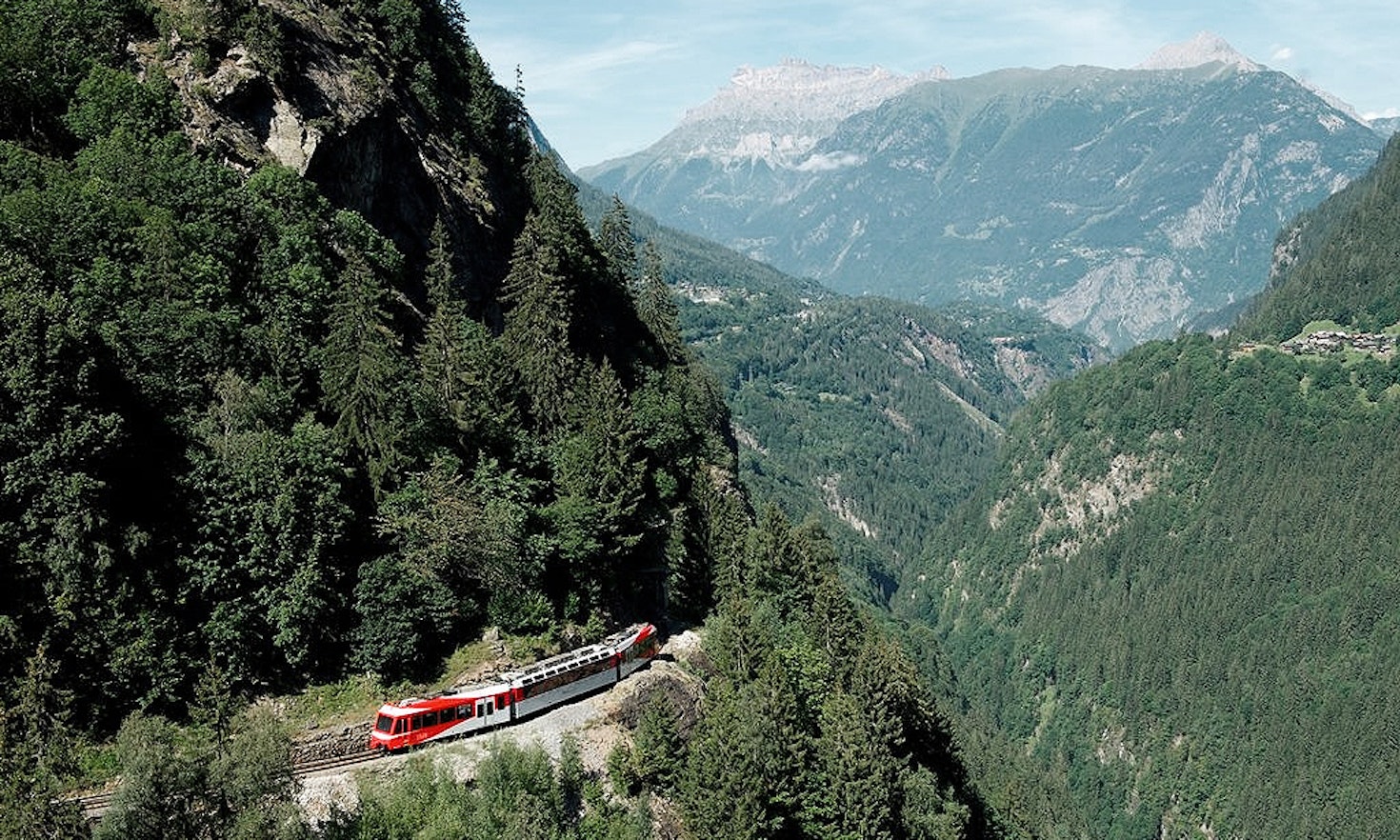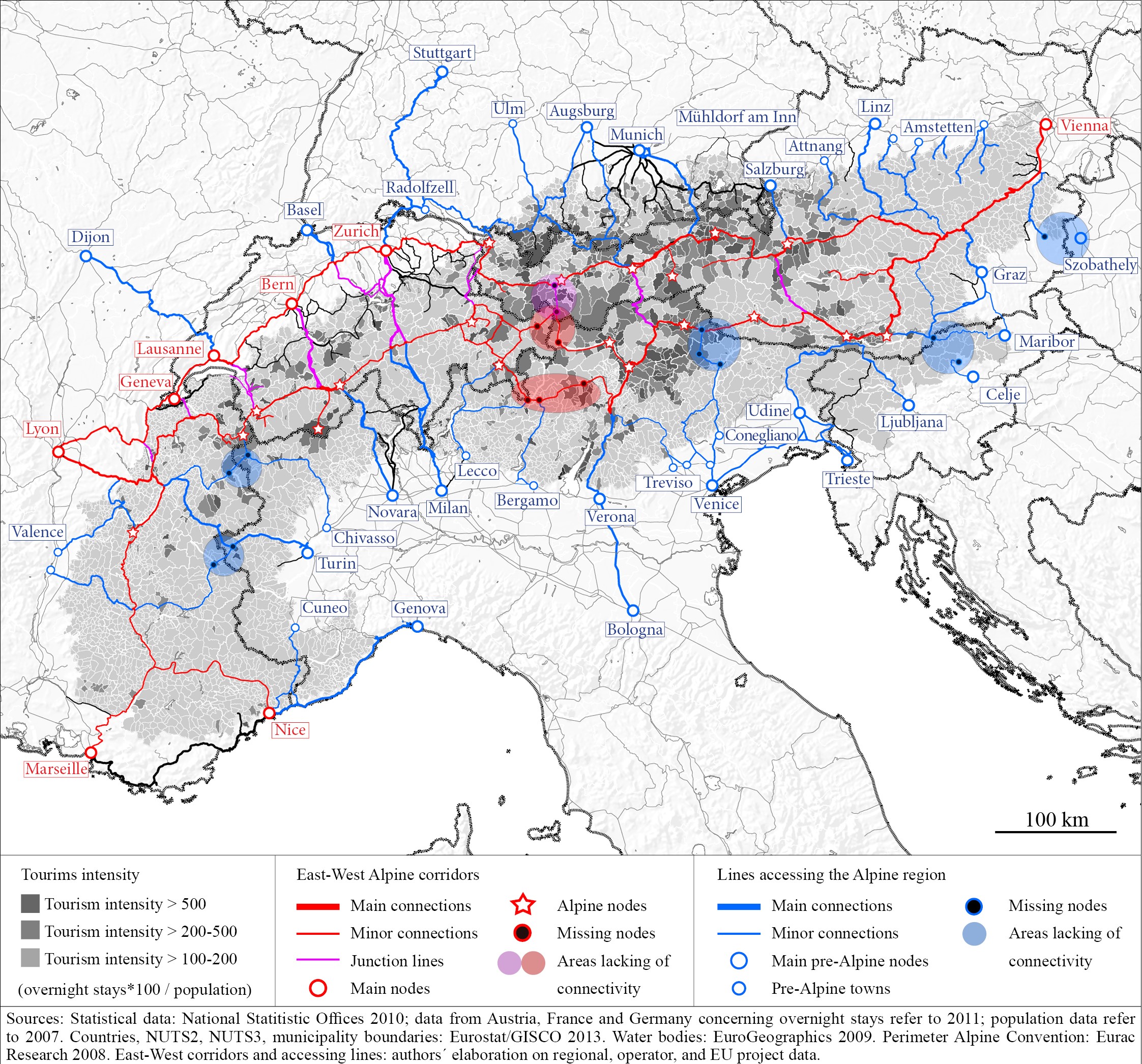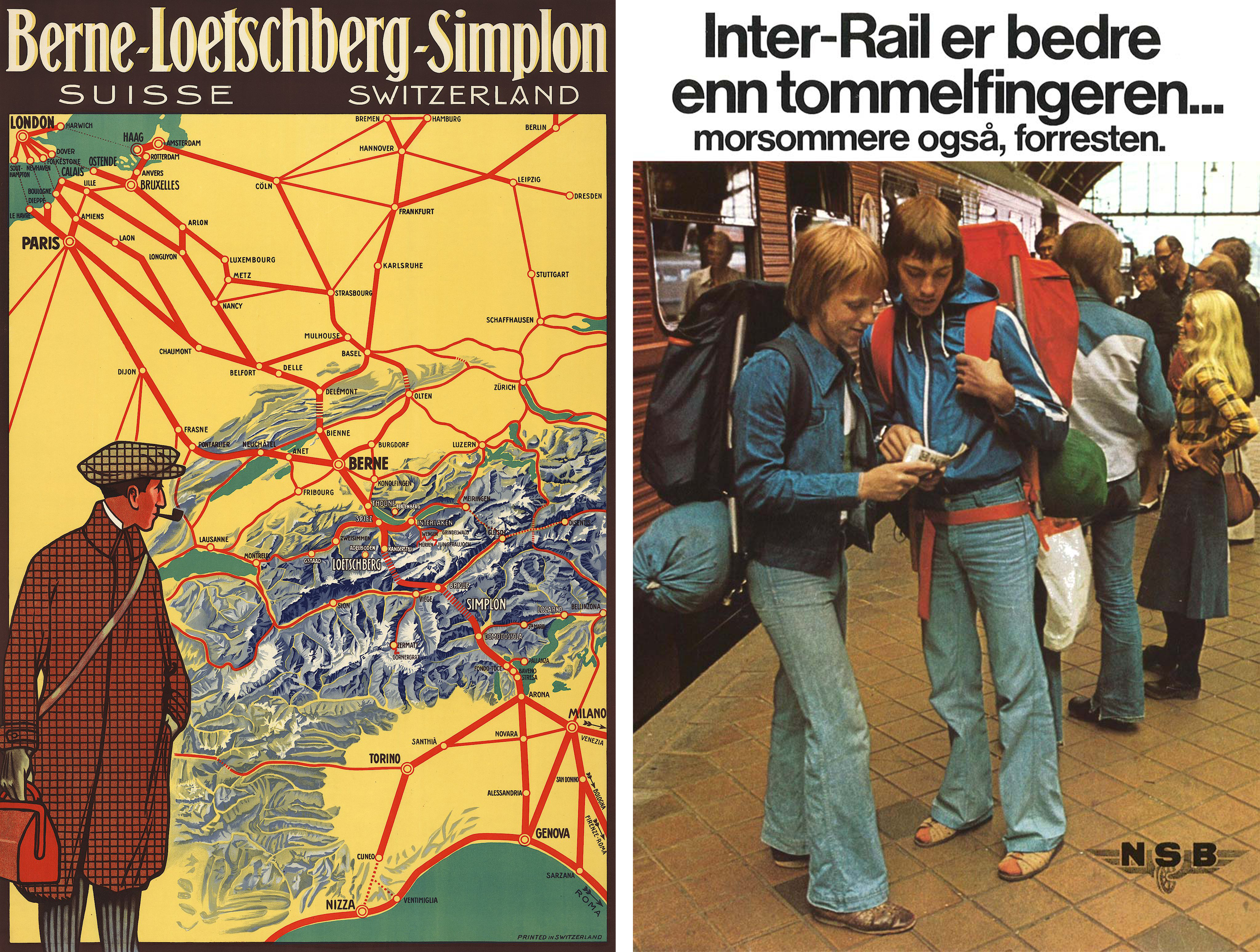Across the Alps – Cross-border public transport as driver to promote a unified regional Alpine network

Current milestones for the development of Alpine mobility
To encourage a higher use of public transport, both main trans-Alpine corridors and minor regional lines have been highly boosted in the last 15 years. The former are essential to access and cross the Alps, connecting main pre-Alpine centres; the latter reach minor valleys, connecting them with main cities belonging to the trans-Alpine corridors. South Tyrol testifies effectively this two-pole attention: great investments along the Brenner railway aim to improve travel times, while the requalification of local railways (in Venosta and Pusteria valleys) has increased the suitability of public transport to move within the region. Moreover, technical differences between these two systems are going to be solved to allow trains travelling on both lines with no change.
Current underexploited occasions
If these two systems receive large investments because of their strategical role for both citizens and tourists [4], a comparable attention is not given to the inter-regional and transboundary links. These connections are often technically challenging, highly expensive and uncertainly beneficial, therefore low developed. In particular, the absence of infrastructures or the low appeal of multimodal connections, as well as the low level of informative and tariff integration making travelling less user-friendly are crucial issues affecting cross-border Alpine transport. Consequently, most of the regional virtuous networks above-mentioned are not suitably linked each other across regional or national borders, missing the potential synergy reachable through their integration. Nevertheless, working on the enhancement of cross-border links may be strategic for the sustainable development of tourism and mobility in the Alpine region, since:
- Alternative itineraries may be suggested, through promoting the integration between regional networks especially along the east-west routes (Picture 2, red lines).
- The accessibility of the Alps from minor pre-Alpine regions may be increased, through developing currently weak inter-regional connections (Picture 2, blue lines).

Picture 2 – A potential map of a unified Alpine network
Source: Own elaboration of the authors
For a unified Alpine regional network
To turn independent regional best practices in a unified Alpine regional network (appealing for alternative tourism practices), holding together available elements is essential, jointly with the development of strategical missing connections. Along with this hypothesis, the project Connec2CE [5] is testing eight pilot actions dealing with main issues affecting cross-border regions of Central Europe. This experience shows how much comprehensive information and suitable tariffs and ticketing systems can strongly improve the cross-border integration, making multimodal travels easier. In this respect, Interrail may represent a suggestive but concrete occasion to promote alternative rail itineraries across the Alps [6].
To conclude, making this opportunity well visible and appealing for tourists is the first step, which can also support the future development of missing/low-appealing links and consequently promote the unification of the Alpine regional networks across regional and national borders, reaching a wider and more comprehensive scale.

Picture 3 – The Swiss and Interrail posters.
Sources: The Berne-Loetschberg-Simplon line. Online at: https://www.alptransit-portal.ch/it/eventi/ereignis/collegamento-attraverso-il-loetschberg/?no_cache=1&cHash=b919b90c799ef687a059168664a3a7b4; One of the Interrail posters in the 70´. Online at: https://retours.eu/en/43-interrail-posters/
Author: Alberto Dianin
References
[1] Eurostat, 2016. Tourism statistics 2016 edition. 2016, Brussels. Online at: http://ec.europa.eu/eurostat/documents/4031688/7735573/KS-02-15-874-EN-N.pdf/fbae3c67-d95e-4f90-8d51-6902e8265d49 [2] Autonomous Province of Bolzano. Provincial Institute of Statistics – Astat, 2017a. Il turismo in alcune regioni alpine 2016. 2017, Bolzano. Online at: http://astat.provincia.bz.it/it/news-pubblicazioni.asp?news_action=300&news_image_id=953326 [3] Permanent Secretariat of the Alpine Convention, 2013. Sustainable tourism in the Alps. Report on the stat e of the Alps. 2013, Innsbruck. Online at: http://www.alpconv.org/en/AlpineKnowledge/RSA/tourism/Documents/RSA4%20en%20WEB.pdf [4] EU – Official Journal of the European Union, 2007. Protocol on the implementation of the 1991 Alpine Convention in the field of transport. Transport Protocol. Online at: http://www.alpconv.org/en/convention/protocols/Documents/transportprotocolEN.pdf [5] Interreg Central Europe, Connect2CE, 2018s. Online at: https://www.interreg-central.eu/Content.Node/CONNECT2CE.html [6] Retours, 2018. Europe in your pocket. Online at: https://retours.eu/en/43-interrail-posters/Citation
This content is licensed under a Creative Commons Attribution 4.0 International license except for third-party materials or where otherwise noted.







